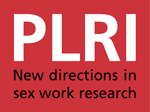HIV/AIDS
The specific objectives of the study were to explore and analyze consistencies and mismatches between existing official Brazilian policy guidelines and program implementation in the area of HIV/AIDS prevention and health care among female sex workers. Data analysis and major findings discussed throughout the report are organized around five major themes as follows: 1) STD/HIV/AIDS prevention policies and programs directed at sex workers evolved in the last two decades; Article in Social Science & Medicine Volume 72, Issue 5, March 2011, Pages 710-716. By Evelyn Matsamura Kiapi Maclean Kamya. / Credit: Evelyn Kiapi/IPS Criminalisation is but one of the tools

